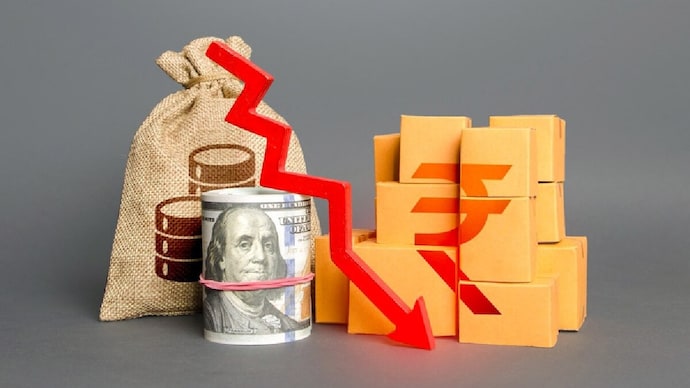Indian Rupee Hits All-Time Low
The Indian rupee recently fell to an unprecedented low of 87.29 against the US dollar. This decline occurred on February 3, 2025, amidst rising fears of a global trade war triggered by US tariffs on imports from Canada, Mexico, and China. The dollar index surged over 1%, reflecting the strengthening of the US dollar against a basket of currencies.
Factors Behind the Rupee’s Depreciation
The depreciation of the rupee can be attributed to several key factors:
- The imposition of tariffs by the US on multiple countries raised concerns about a global trade conflict.
- Robust US jobs data and expectations of increased interest rates boosted the dollar’s value.
- Rising treasury yields have made dollar forward positions more attractive to investors.
Impact of Foreign Institutional Investors
Foreign institutional investors (FIIs) have been net sellers in the Indian market, contributing to the rupee’s decline. In the third quarter of FY25, FIIs sold approximately $11 billion. This outflow of capital has intensified pressure on the rupee. The widening trade deficit, which reached $188 billion, further exacerbates the situation, indicating a growing imbalance in trade.
Consequences of a Weakening Rupee
A weaker rupee has mixed effects on the Indian economy:
Negative Effects:
- It increases the cost of imports, particularly crude oil, leading to higher inflation.
- Companies with foreign debt face increased costs, which can impede investment.
- Consumer sentiment may also decline due to reduced purchasing power.
Positive Effects:
- Adepreciated rupee can enhance the competitiveness of Indian exports, benefiting sectors such as IT and pharmaceuticals
- Indians living abroad can send more valuable remittances back home, which can support the economy, especially in regions reliant on these funds.
The Reserve Bank of India’s Dilemma
The Reserve Bank of India (RBI) faces a challenging situation. It must balance growth, inflation, and currency stability. While the RBI appears to favour a free-floating rupee in response to market conditions, the question remains whether India can sustain this approach. Analysts suggest that the RBI may consider a rate cut to address the prevailing economic pressures, particularly if the currency remains concern.
Future Outlook
The outlook for the rupee remains uncertain. Analysts predict that if the rupee depreciates further, it could reach levels that may impact economic stability. The RBI’s upcoming monetary policy meeting will be crucial in determining the future direction of the rupee and the broader economic landscape.
Month: Current Affairs - February, 2025
Category: Economy & Banking Current Affairs








